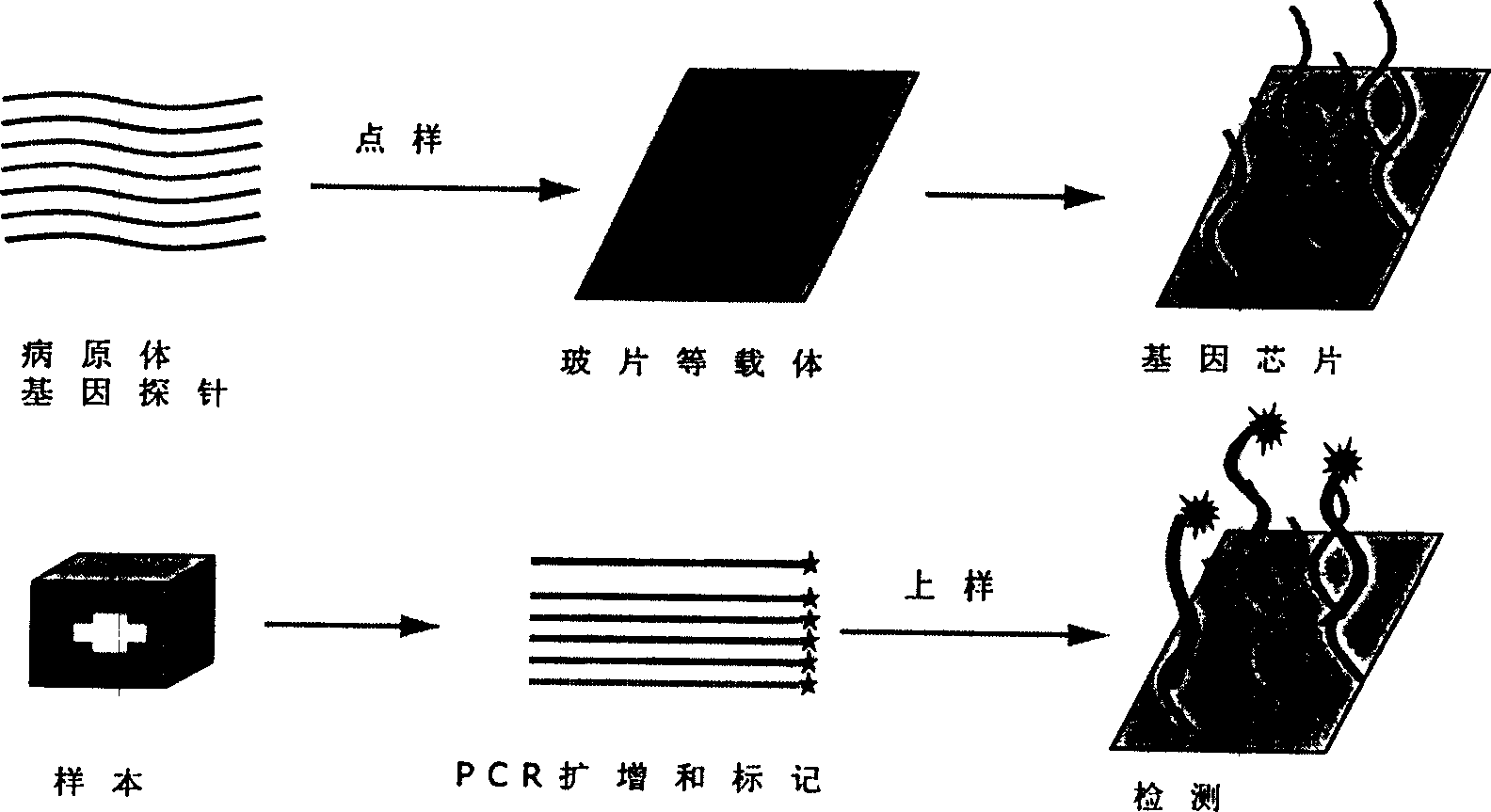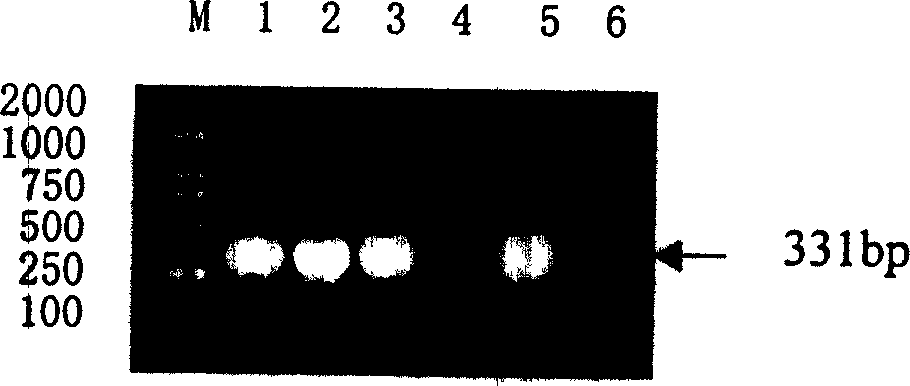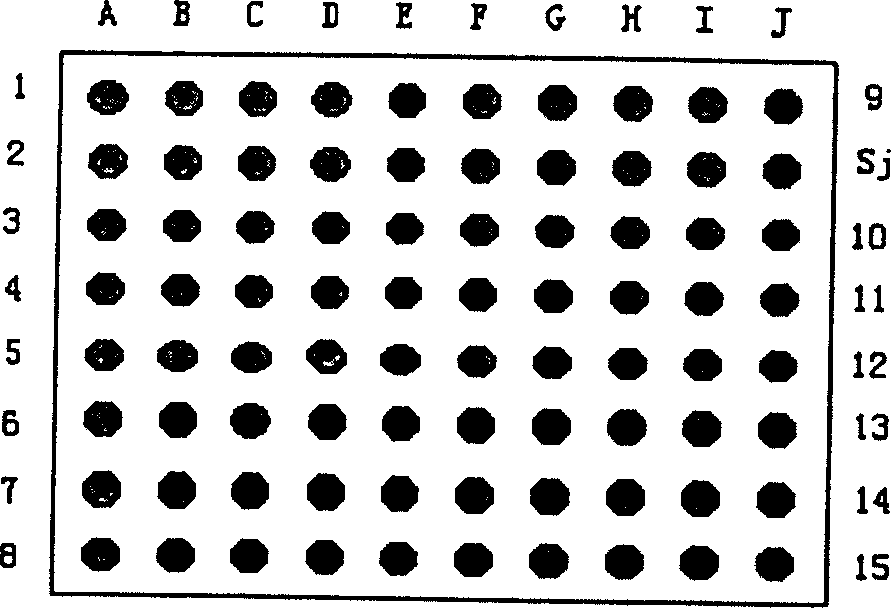Detection type gene chip for detecting various infectious desease and use thereof
A gene chip, infectious disease technology, applied in the field of medical testing and gene chip, detection type gene chip
- Summary
- Abstract
- Description
- Claims
- Application Information
AI Technical Summary
Problems solved by technology
Method used
Image
Examples
Embodiment 1
[0065] Example 1. Development and preliminary application of a gene chip for detection and typing of malaria parasites
[0066] Malaria is a parasitic disease that seriously endangers human health. Especially in the event of floods, large-scale crowd gatherings and bioterrorism, the threat of epidemics is still relatively prominent. Efficient, sensitive, and rapid methods of monitoring malaria parasites are the primary prerequisite for malaria control. We established a gene chip for detecting and typing Plasmodium vivax and Plasmodium falciparum, optimized and determined the detection conditions of the chip, and compared some samples.
[0067] 1. Design of primers and probes
[0068] On the basis of fully consulting various literatures, according to the small subunit ribosomal ribonucleic acid (SSrRNA) of Plasmodium vivax and Plasmodium falciparum, the corresponding sequences of other human Plasmodium genera such as Plasmodium malariae and human SSrRNA were analyzed and compa...
Embodiment 2
[0118] Example 2. Preparation and detection of Schistosoma japonicum gene chip
[0119] Schistosomiasis is a zoonotic parasitic disease that is widely distributed all over the world, and the epidemic is still very serious in some areas of my country. In the process of prevention and control, the reinfection of the population and the re-population of schistosomiasis in the control area have always been difficult problems in the practice of prevention and control. Since oncomelania is the only intermediate host of Schistosoma japonicum, the spread and redistribution of Oncomelania snails are the basic factors causing the re-epidemic of schistosomiasis. Therefore, efficient and correct monitoring of schistosomiasis and snails is extremely important in the prevention and control of schistosomiasis. Gene chip technology is suitable for large-scale and high-throughput detection requirements, especially for on-site detection and monitoring of schistosomiasis endemic areas, and has b...
Embodiment 3
[0131] Example 3. Establishment of a method for detecting Orientia tsutsugamushi DNA by gene chip technology
[0132] Scrub typhus is an insect-borne natural foci disease caused by Orientia tsutsugamushi. In recent years, the epidemic area in my country has been expanding. Because the disease is prone to misdiagnosis, resulting in improper treatment, and even death. Therefore, rapid and accurate diagnosis is extremely important. We selected the 56kD protein gene sequences of three standard strains of Orientia tsutsugamushi, which are both conserved and specific, synthesized oligonucleotide probes, and preliminarily established a diagnostic method for detecting Orientia tsutsugamushi-specific DNA using chip technology
[0133] 1. Design and synthesis of primers and probes
[0134] According to the sequence of the main surface antigen 56kD protein of Orientia tsutsugamushi standard strains Karp Gilliam and Kato[2,3], combined with computer software analysis and NCBI BLAST scre...
PUM
 Login to View More
Login to View More Abstract
Description
Claims
Application Information
 Login to View More
Login to View More - R&D
- Intellectual Property
- Life Sciences
- Materials
- Tech Scout
- Unparalleled Data Quality
- Higher Quality Content
- 60% Fewer Hallucinations
Browse by: Latest US Patents, China's latest patents, Technical Efficacy Thesaurus, Application Domain, Technology Topic, Popular Technical Reports.
© 2025 PatSnap. All rights reserved.Legal|Privacy policy|Modern Slavery Act Transparency Statement|Sitemap|About US| Contact US: help@patsnap.com



